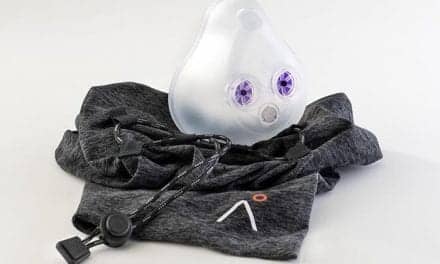Cleveland Clinic researchers study links between seizure frequency and insomnia severity.
People with epilepsy are more likely than the general population to have insomnia and sleep apnea. The daytime sleepiness associated with both of these conditions could potentially aggravate the neurological condition, leading to more seizures throughout the day and night, diminishing the quality of life for people who live with this disorder. So why not screen every neurological patient for sleep disorders and treat them accordingly?
This is a question that the Cleveland Clinic’s director of the Sleep Disorders Center Nancy Foldvary-Schaefer, DO, MS, a neurologist and sleep specialist, will likely ask during her presentation at the American Academy of Neurology (AAN) meeting in May.
She will be presenting an abstract that she and a team of researchers from the Cleveland Clinic in Ohio wrote, looking at a correlation between the number of seizures per month that people with epilepsy experience and their insomnia severity.
It’s important work that provides evidence that perhaps insomnia symptoms can directly impact seizure control in people with epilepsy and, therefore, the next step would be to treat those insomnia symptoms to demonstrate that seizures decline when disordered sleep is remedied, Foldvary-Schaefer says.
In addition to the abstract presentation, Foldvary-Schaefer will also be teaching a course at the AAN meeting titled “Sleep-Disordered Breathing in Neurology Populations: From Lab to Clinic” on neurological disorders and their relationship to obstructive sleep apnea on Saturday, May 4. She hopes that the course and her presentation will spread awareness among neurologists about the prevalence and potential impact sleep disorders can have on the populations neurologists treat.
Sleep disorders and sleep problems are relatively common in people with epilepsy, and now there are strategies to address them, including cognitive behavioral therapy for insomnia (CBT-I), a proven way to treat insomnia by changing thought patterns and sleeping habits, Foldvary-Schaefer says.
There’s no reason why neurologists shouldn’t be screening their patients for sleep disorders, but not enough of these physicians are trained in sleep medicine. Just like there is now training for primary care doctors to recognize sleep apnea in their patient populations, there should be additional training in sleep education for neurology providers, a simple way to improve patient outcomes, says Foldvary-Schaefer.
“There should be some sleep screening in the care of all neurological patients,” she adds.
To further explore how treating sleep disorders can impact epilepsy, Foldvary-Schaefer and a team of researchers are currently working on a randomized controlled study using a smartphone app called Go! to Sleep , developed by the Cleveland Clinic, to administer CBT-I. The research will look at patients who experience both insomnia and epilepsy and how CBT-I can help ease their symptoms.
“It will be nice to show that an intervention will not only improve subjective sleep, but also quality of life, and maybe even reduce seizures in this population,” she says.
Lisa Spear is associate editor of Sleep Review.



